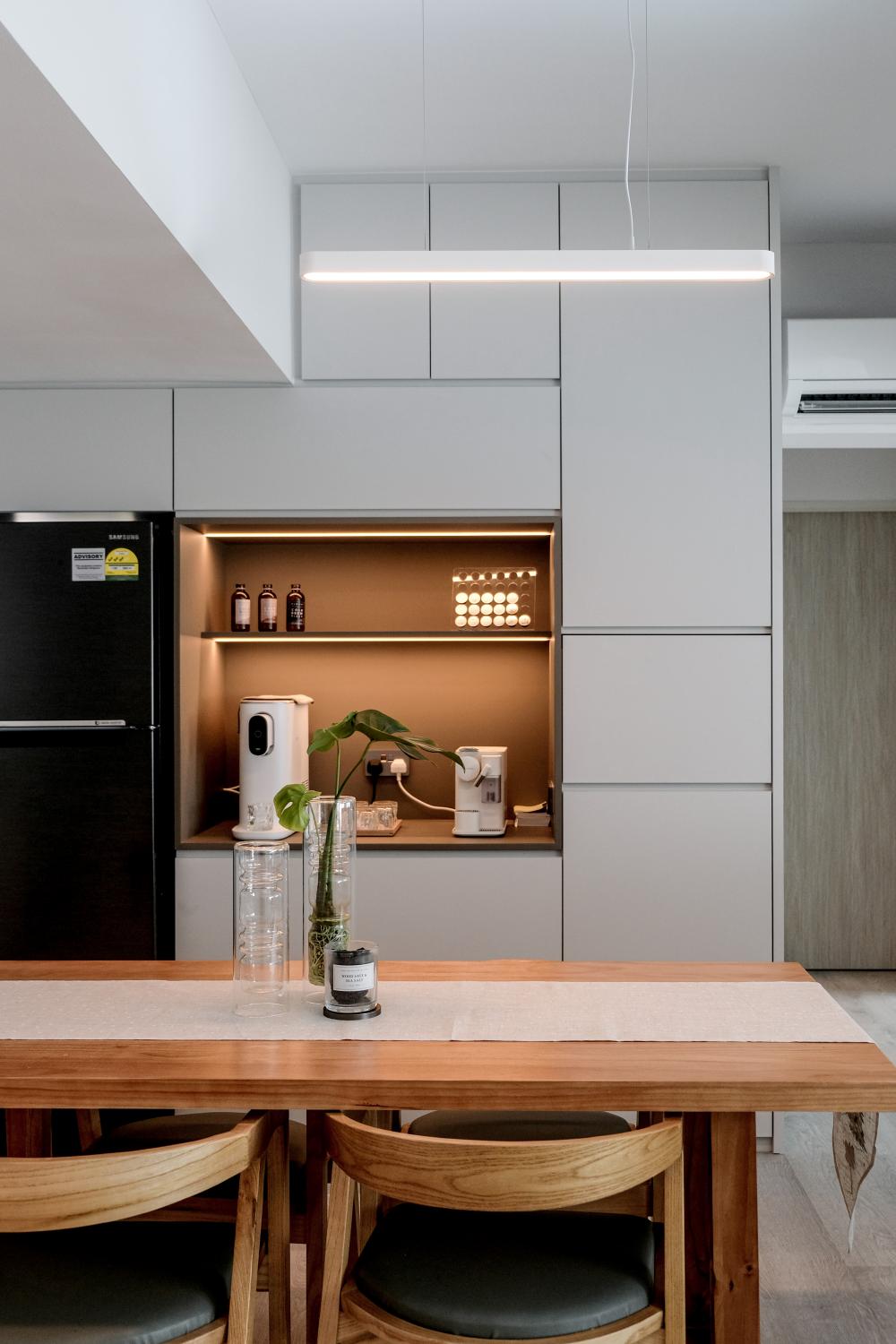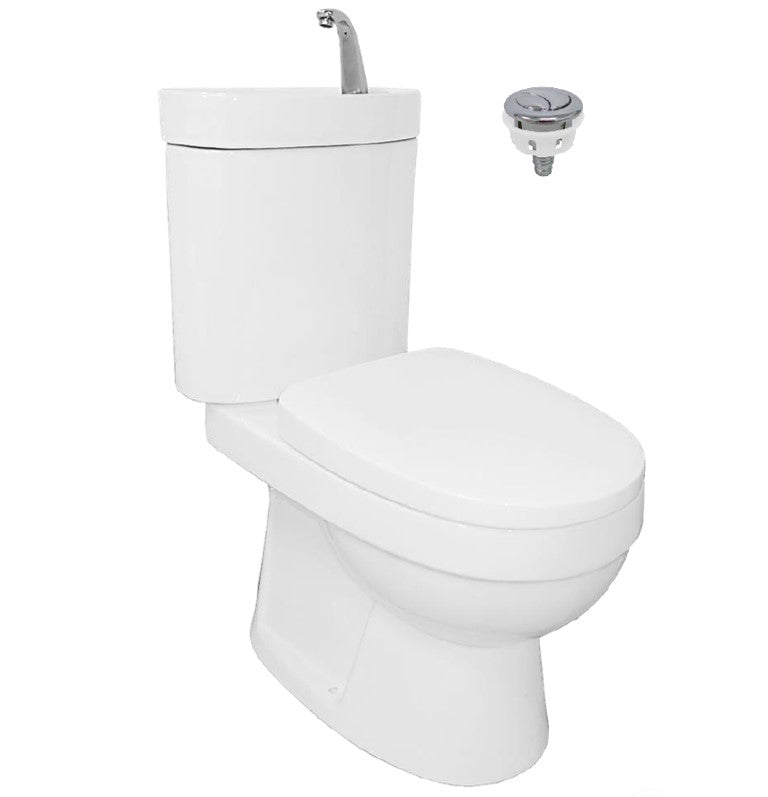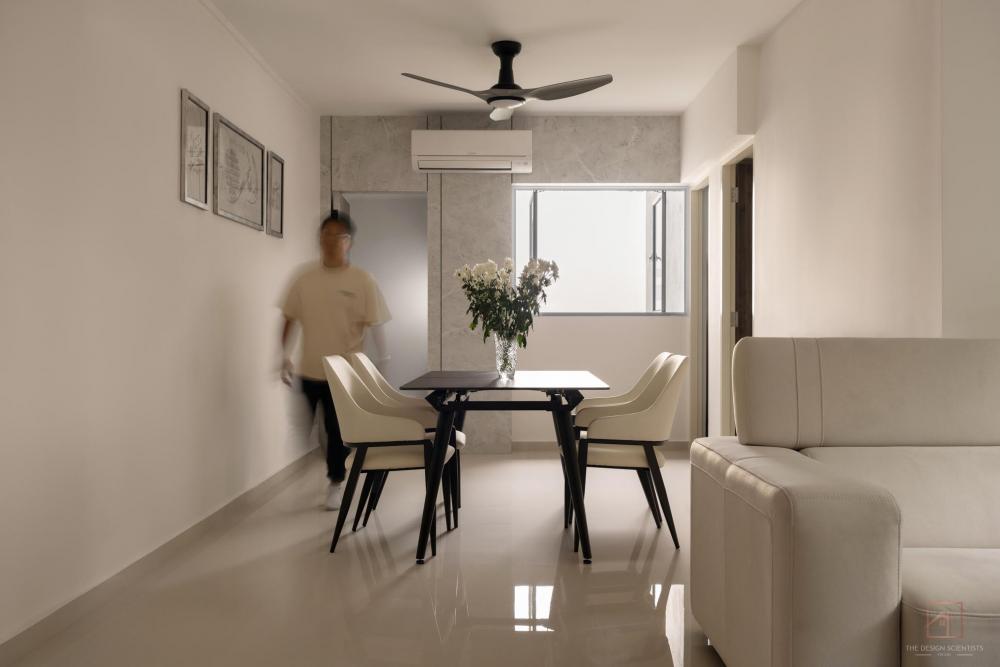How To Design A Home That’s Sustainable And Low-Maintenance
As urban living continues to evolve, the importance of sustainability in home design has become increasingly apparent, particularly in densely populated areas like Singapore.
A sustainable home not only benefits the environment but also contributes to a healthier, more comfortable living space. When combined with low-maintenance features, these homes can lead to long-term cost savings and reduced environmental impact.
In this guide, we will explore how to design a home that is both sustainable and low-maintenance, offering practical tips and insights to help you create a living space that aligns with your values and lifestyle.
Choosing Sustainable Building Materials
When it comes to building or renovating your home, selecting eco-friendly materials is a crucial first step toward sustainability.
Using recycled materials (or items that are built to last)
Recycled materials, such as reclaimed wood, can be an excellent choice for reducing environmental impact.
However, it’s important to recognize that opting for recycled materials may not always be practical. The availability of recycled options can be limited, and finding the right pieces for your project might prove challenging.
In cases where recycled materials are not feasible, another sustainable option is to invest in new, high-quality pieces that are built to last. For example, some furniture stores specialize in wooden pieces that come with a lifetime guarantee.


Joo Seng ($65,000) by Eames & Scales
By purchasing a durable wooden dining table from such a store, you not only invest in a piece that will last for years, but you also have the option to bring it back for polishing and maintenance, further extending its lifespan. This approach ensures that you are making a sustainable choice by reducing the need for frequent replacements.
Using locally sourced materials
Using locally sourced materials is another effective way to minimize your home’s carbon footprint. Locally produced materials reduce the energy consumed during transportation and support local economies. But again, it’s important to acknowledge that in a place like Singapore, where certain resources are scarce, it may not always be possible to use materials that are truly local.
If you aren’t able to find materials that are truly local, try to source materials from as close to home as possible. For instance, when shopping for wooden tables, consider Suar Wood, which is grown around Southeast Asia, rather than opting for exotic woods imported from distant regions like Brazil. By making these informed choices, you can reduce the environmental impact of your home’s construction or renovation.
Bamboo: a great option for sustainability
Wood aside, bamboo is an excellent sustainable option for various aspects of home design, thanks to its rapid growth and renewability. Unlike traditional hardwoods, bamboo can grow up to almost 1 metre in just 24 hours and reaches maturity in about 3 to 5 years, making it a much faster and more sustainable resource.


In home design, bamboo can be used for a variety of applications. It’s commonly used for flooring, offering a durable and attractive alternative to conventional wood floors. Bamboo is also popular for cabinetry, furniture, and even decorative elements like wall panels and blinds. Its natural strength and flexibility make it a versatile material that can withstand wear and tear, ensuring longevity in your home.
Moreover, bamboo cultivation requires minimal pesticides and fertilizers, and its root system helps prevent soil erosion, contributing positively to the environment. By incorporating bamboo into your home, you not only add a unique aesthetic but also support a sustainable and eco-friendly approach to design.
Mattresses with recycled polyester
The words “polyester” and “eco-friendly” don’t often go hand-in-hand, but in this case, they do. Not many people know this, but IKEA has a range of mattresses that are made with recycled polyester, which is an innovative way to repurpose non-biodegradable materials like PET bottles into something both functional and sustainable.


To be precise, these mattresses have inner covers and tickings that are made from recycled polyester. This material offers the same strength, flexibility, and durability as conventional polyester, but with a significantly lower environmental impact.
Mattresses made with recycled polyester demonstrate that sustainable choices don’t have to compromise on quality or safety. They provide the same comfort and durability as traditional materials while contributing to a more sustainable future.
Using low-VOC paints and finishes
When designing a sustainable and healthy home, it’s crucial to consider the impact of the materials you use, including paints and finishes. Volatile Organic Compounds (VOCs) are chemicals found in many traditional paints and finishes that can emit harmful gases over time, contributing to indoor air pollution and negatively affecting your health.
To create a healthier living environment, opt for low-VOC or no-VOC paints and finishes. These products are designed to minimize the release of toxic fumes, making them safer for both your family and the environment. Low-VOC paints have significantly lower levels of these harmful compounds, which reduces the risk of respiratory issues and allergies.


Beyond their health benefits, low-VOC paints and finishes also contribute to a more sustainable home. They often have a reduced environmental footprint compared to conventional products, as they emit fewer pollutants during application and curing. Many of these paints and finishes are available in a wide range of colours and finishes, so you don’t have to sacrifice style for sustainability.
When choosing low-VOC products, look for certifications or labels that indicate their low chemical emissions. Additionally, consider finishes with low environmental impact, such as water-based or natural paints, which can provide the same level of durability and aesthetic appeal without compromising air quality.
Shop second-hand
We’ve talked about how it may be challenging to source recycled or second-hand materials for constructing your home, but it’s much easier to find second-hand furniture – these are widely available. Embracing second-hand furniture is a practical and eco-friendly choice that offers numerous benefits for your home.
Opting for pre-loved pieces not only extends the lifecycle of existing items but also reduces the demand for new resources and minimizes waste. Second-hand furniture often comes at a fraction of the cost of new items, allowing you to find unique and stylish pieces without breaking the bank. Shopping second-hand also offers the opportunity to add character to your home. Each piece carries its own history and charm, making your space feel more personalized and unique.
Energy Efficiency
In the quest for a sustainable and low-maintenance home, energy efficiency plays a crucial role. By optimizing energy use, you not only reduce your environmental impact but also cut down on utility costs.
Effective energy management involves various strategies and technologies that enhance the performance of your home’s systems and appliances, making them more efficient and eco-friendly.
Optimizing natural ventilation and lighting
One of the most effective ways to create an energy-efficient home is by optimizing natural ventilation and lighting. Strategic design choices, such as incorporating large windows and open layouts, can maximize airflow and reduce the need for air conditioning. In Singapore’s warm and humid climate, cross-ventilation – where air flows naturally through the home from one side to the other – is particularly beneficial.


354 Bukit Batok ($180,000) by Jesigns Interior Design
Of course, these design elements are more feasible in landed properties where you have greater flexibility to modify your home’s layout and exterior. For those living in high-rise condominiums or HDB flats, there are often strict regulations imposed by the Building and Construction Authority (BCA), Housing & Development Board (HDB), and Management Corporations Strata Title (MCST) that limit changes to windows and building facades.
In such cases, consider alternative strategies to enhance energy efficiency without violating regulations. For instance, installing window films can help reduce heat gain while still allowing natural light to enter. These films can significantly lower indoor temperatures and reduce reliance on air conditioning.
Additionally, you might explore using energy-efficient blinds or shades that provide insulation and glare reduction. These often feature special materials and designs that help insulate your windows. For example, cellular or honeycomb shades have a unique structure that traps air within their cells, creating an insulating barrier between the interior of your home and the outside environment. This prevents heat gain during warmer months, leading to a more consistent indoor temperature.
Some energy-efficient blinds and shades also use reflective or absorptive materials to manage solar heat gain. Reflective blinds have a coating that reflects sunlight away from the window, thereby reducing the amount of heat that enters your home. Absorptive shades, on the other hand, are designed to absorb and dissipate heat before it can enter your living space. Both types of materials help in reducing the reliance on air conditioning and cooling systems.
Renewable energy sources and solar energy
Another key aspect of energy efficiency is the use of renewable energy sources. Installing solar panels is an excellent way to harness the abundant sunlight available in Singapore, significantly reducing your home’s reliance on non-renewable energy sources.
Solar panels might sound intimidating, but you don’t have to start with a large-scale installation to make a difference. If you’re not ready for a full solar setup, there are smaller, more manageable options that can still contribute to energy savings. For example, consider starting with solar-powered lights or gadgets.


You can find solar lights on platforms like Shopee for under $10 each. These lights charge during the day in sunny spots and provide illumination at night, offering a simple and cost-effective way to incorporate solar energy into your home. Similarly, solar power banks are available, which can be charged with sunlight and then used to power your phone or other devices via a USB output. These options provide an accessible entry point to solar technology, allowing you to benefit from renewable energy without a significant upfront investment.
Water Conservation
Water conservation is another vital component of sustainable home design. If you haven’t already done so, start thinking about how you can design your home to reduce your household’s water footprint.
To start off, installing water-saving fixtures, such as low-flow taps, dual-flush toilets, and water-efficient showerheads, can significantly reduce water consumption without compromising on comfort. These fixtures are engineered to use less water while maintaining adequate water pressure, making them an easy and effective way to conserve water.
Low-flow taps and showerheads, for example, reduce the flow rate of water while still providing a satisfactory showering or washing experience. Dual-flush toilets allow you to choose between a lower flush for liquid waste and a higher flush for solid waste, effectively reducing the amount of water used per flush. By adopting these fixtures, you can make a significant impact on your household’s overall water usage.
Then there are “water-recycling toilets,” which feature a unique mechanism where water used for flushing the toilet is also utilized to provide a handwashing facility.


Essentially, the system collects and filters the water from the flush, directing it to a basin or tap where you can wash your hands. In Singapore, some BTO units come equipped with these types of water-saving toilets, and if you do have these in your home, it will definitely help you reduce your water consumption.
On top of designing your home to be energy-efficient and eco-friendly, incorporating water conservation practices into your daily routine can further enhance your sustainability efforts. Simple habits, such as recycling greywater, can make a significant impact.
For example, instead of disposing of the water used to rinse vegetables or rice, repurpose it to water your plants. This practice not only reduces waste but also provides essential nutrients to your greenery. By integrating these habits into your routine, you can complement the sustainable features of your home and contribute to a more eco-conscious lifestyle.
Low-Maintenance Design
So far, we’ve discussed various sustainable options for creating an eco-friendly home. Now, let’s shift our focus to low-maintenance design.
Designing a home that requires minimal upkeep not only saves you time and effort but also ensures that your sustainable choices remain effective over the long term. Low-maintenance design involves selecting materials, finishes, and features that are durable and easy to care for, reducing the need for frequent repairs or replacements.


Ubi Grove ($35,000) by Co1 Studio
Begin by choosing materials known for their durability and resistance to wear and tear. For instance, opt for high-quality tiles or engineered stone surfaces in high-traffic areas like kitchens and bathrooms. These materials are less prone to staining, scratching, or damage compared to traditional alternatives, and they require minimal cleaning.
Similarly, when selecting paint, choose options that are washable and resistant to mold and mildew. This helps maintain the appearance of your walls with less frequent touch-ups and cleaning. For flooring, consider options like vinyl or composite materials that are easy to clean and maintain, offering both durability and a sleek appearance.
In terms of cabinetry, opt for designs with smooth surfaces and simple profiles. Cabinets with intricate designs, such as Shaker-style cabinets, can be harder to clean because their detailed surfaces and edges tend to collect dust and grime more easily. Smooth surfaces and concealed hinges are easier to wipe down and keep clean, ensuring that your cabinetry stays looking fresh with minimal effort.
For fixtures and fittings, choose items that are easy to maintain, such as faucets with spot-resistant finishes or showerheads that are less likely to accumulate mineral deposits. For handles and knobs, select designs that are simple and smooth, as these are easier to keep clean compared to ornate or textured options.
Use window treatments that are easy to clean, such as roller shades or blinds with wipeable surfaces. Avoid heavy drapes or intricate fabric designs, as these can collect dust and require regular washing. Curtains, in particular, often need specialized cleaning, typically requiring a trip to the dry cleaners, which can be both inconvenient and expensive. Choosing simpler, more manageable window treatments can save you time and reduce ongoing maintenance costs.


Parc Komo ($21,000) by The Interior Lab Pte Ltd
Finally, opt for furniture with durable, easy-to-clean upholstery. Nowadays, most furniture shops recommend sofas made with stain-proof fabrics, such as microfibre or Crypton, which are designed to be both durable and low-maintenance. These fabrics are engineered to repel spills and resist staining, making them a practical choice for homes where ease of cleaning is a priority. In contrast, leather sofas or sofas made of more delicate fabrics may require frequent cleaning or special care, adding to the maintenance effort and potentially increasing costs over time.
Waste Reduction and Recycling
A truly sustainable home is one that facilitates waste reduction and recycling. To do this, incorporate built-in recycling bins into your kitchen design to make waste management more convenient.
For example, organize pull-out bins in your kitchen cabinets for paper, plastic, and glass waste. This setup makes it easier for everyone in the household to participate in recycling efforts. By providing designated spaces for different types of waste, you encourage more effective recycling within your home.
Designing for deconstruction
Another innovative approach to sustainability is designing homes with future deconstruction in mind. This concept involves using modular components that can be easily disassembled and reused when renovations or relocations are needed. In simple terms, this means opting for fewer built-in fixtures and more flexible, loose items that can be adapted or moved as necessary.
For example, if you want storage solutions under your bed, consider buying a storage bed with built-in drawers or compartments rather than installing custom cabinetry. Alternatively, you can choose a regular bed with ample space underneath and use rolling storage boxes or bins. This way, when you decide to update or move, you can easily repurpose or transport these items without the hassle of dismantling permanent fixtures.
Similarly, instead of built-in shelving units, opt for standalone bookcases or modular shelving systems that can be reconfigured or relocated according to your needs. Modular furniture, such as stackable storage cubes or adjustable shelving, offers versatility and can be rearranged or expanded as your requirements change.
By incorporating these flexible design elements, you reduce the amount of construction waste generated during renovations and ensure that your home’s components have a longer lifecycle. This approach not only supports sustainability but also allows for easier updates and customization of your living space.
A final word on designing a sustainable home
Designing a home that is both sustainable and low-maintenance is not only beneficial for the environment but also enhances your quality of life. By carefully selecting eco-friendly materials, optimizing energy and water efficiency, and incorporating waste reduction systems, you can create a home that stands the test of time.
As you embark on your design journey, remember that sustainability and low-maintenance living go hand in hand. By making thoughtful choices today, you can enjoy a comfortable, cost-effective, and environmentally responsible home for years to come!
Want to check out home renovation projects for more inspiration? Browse interior design ideas on Hometrust, or click the button below to get connected with expert designers!
Renovating soon? Let Hometrust recommend the best interior designers.
If you are reading this, you are probably wondering how you can create your dream home.
Here’s the thing, everyone’s needs and requirements for their home renovation is different. A designer that may work for someone else, may not quite work for you.
At Hometrust, we’re here to help match top rated designers, recommended by past homeowners to you through our data-driven and matching algorithm.
Whether you are looking for partial renovation or a full fledge overhaul, we’ll be able to recommend you top designers to match your renovation requirements and lifestyle.
Recommendations and free and you can simply start by helping us understand your needs below!
Get RecommendationsRenovate safe!
The Hometrust Team



